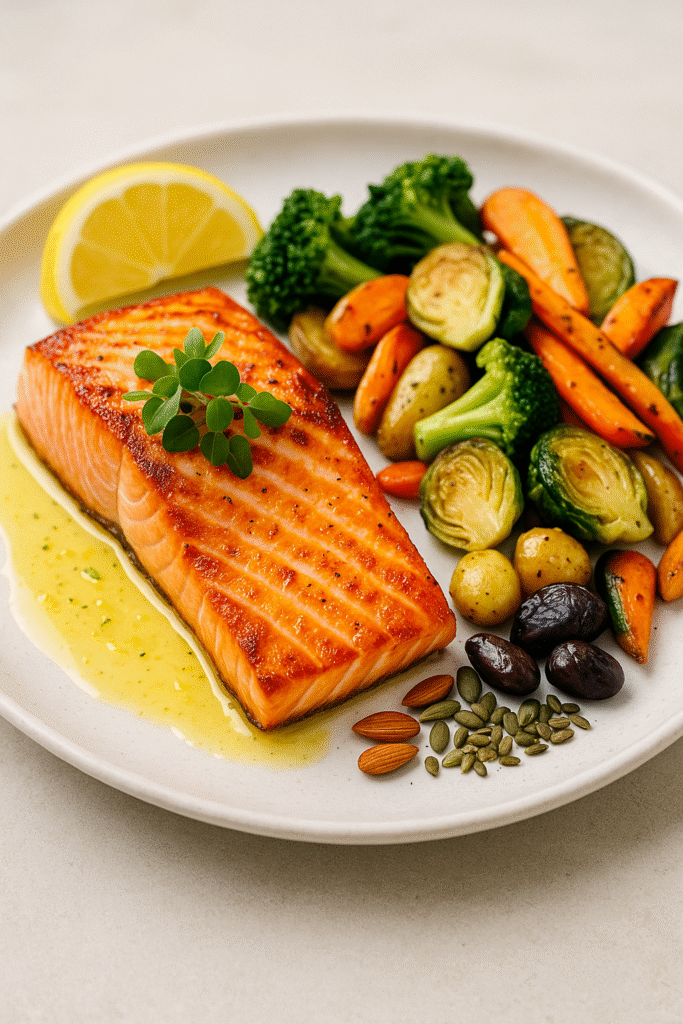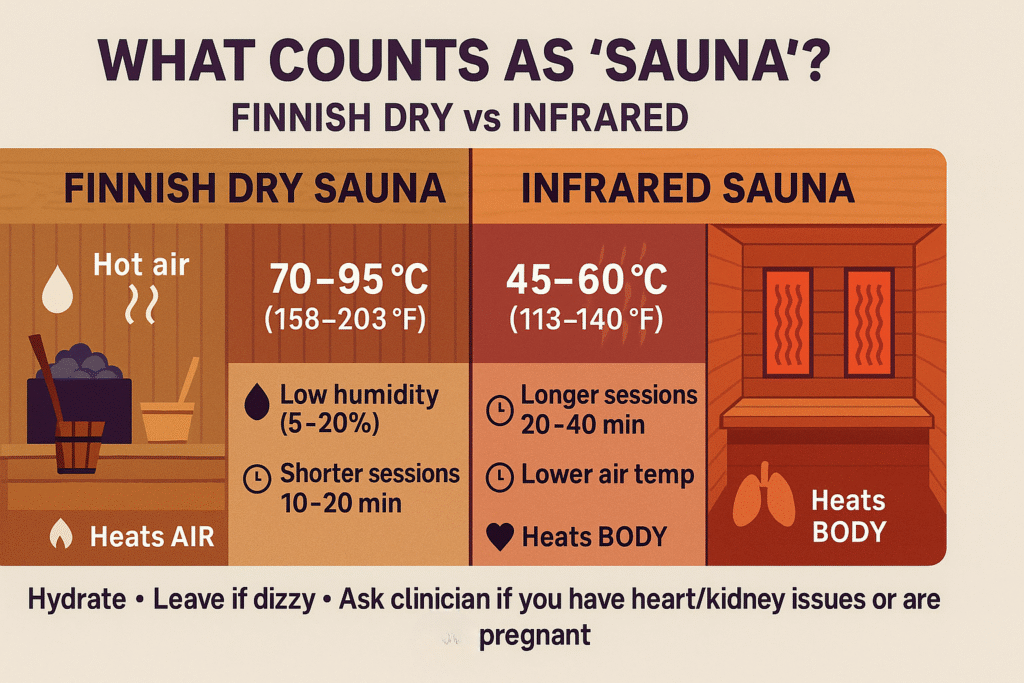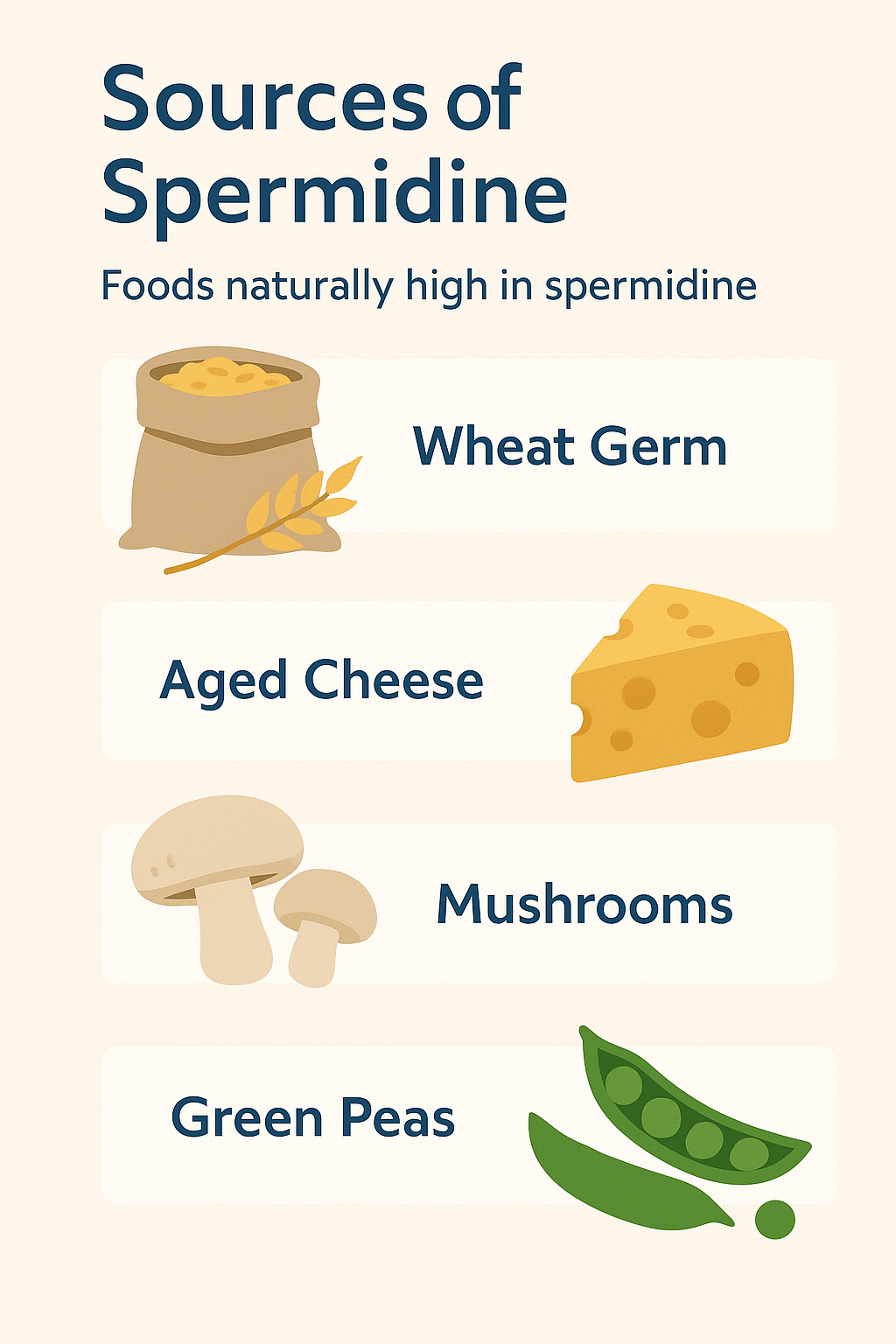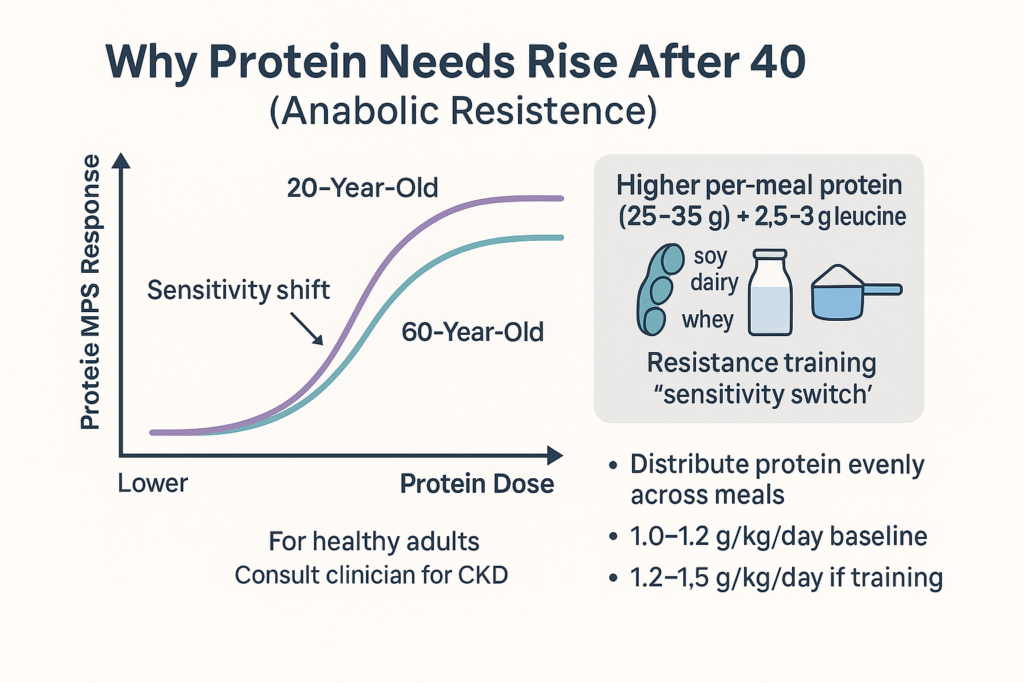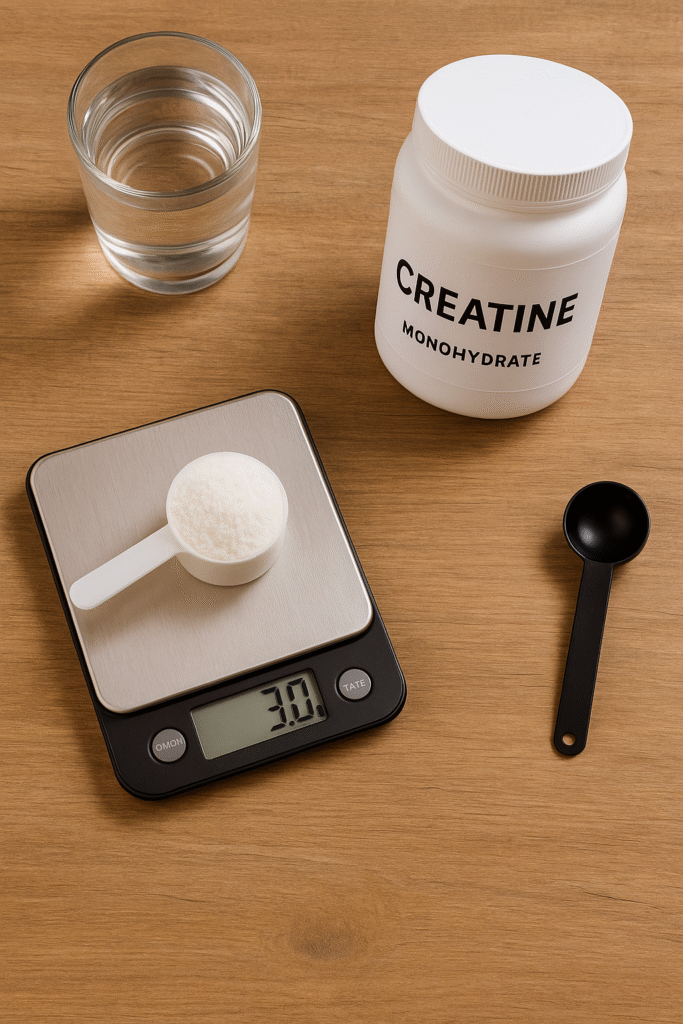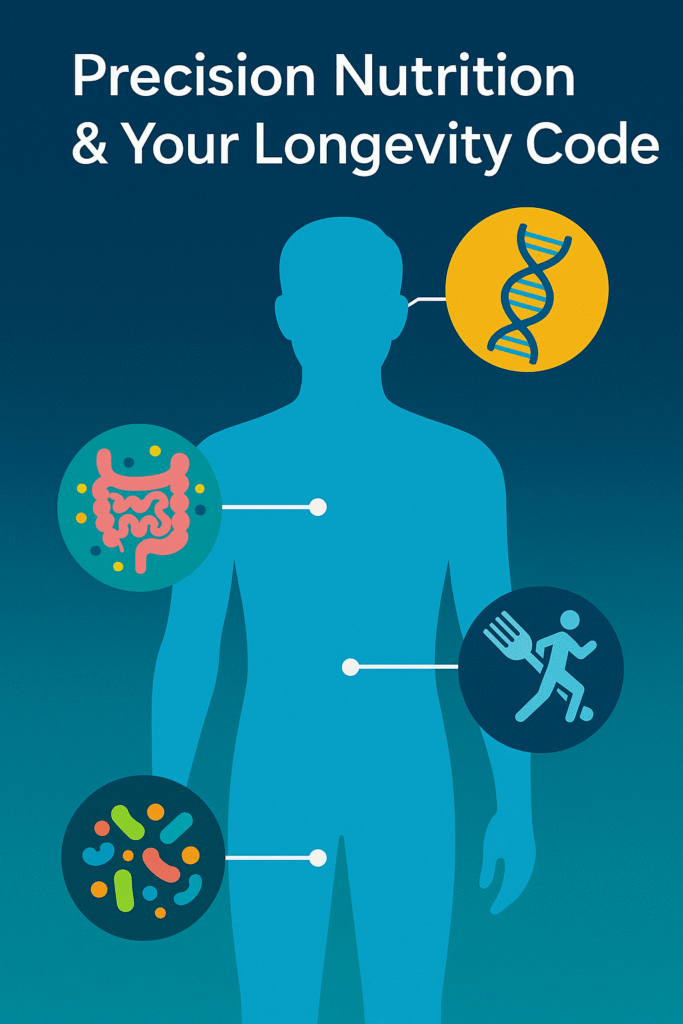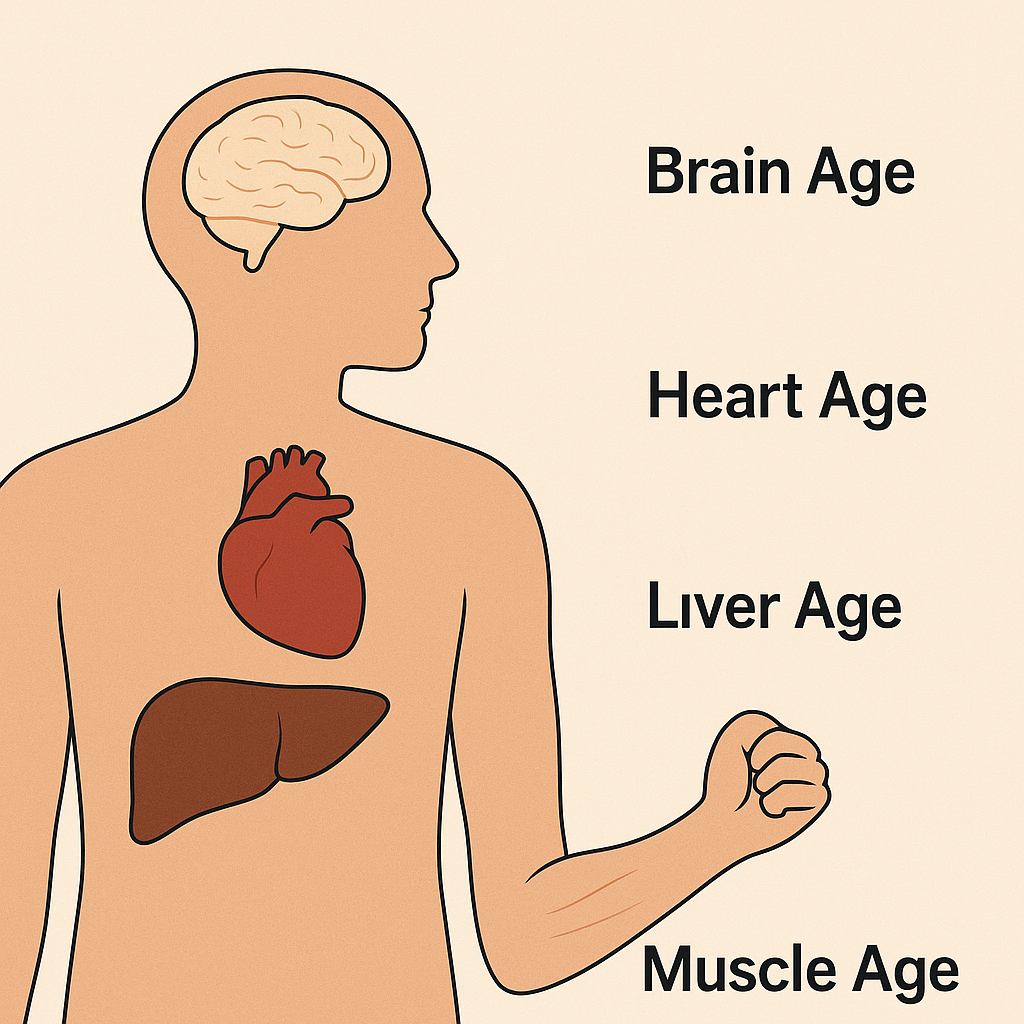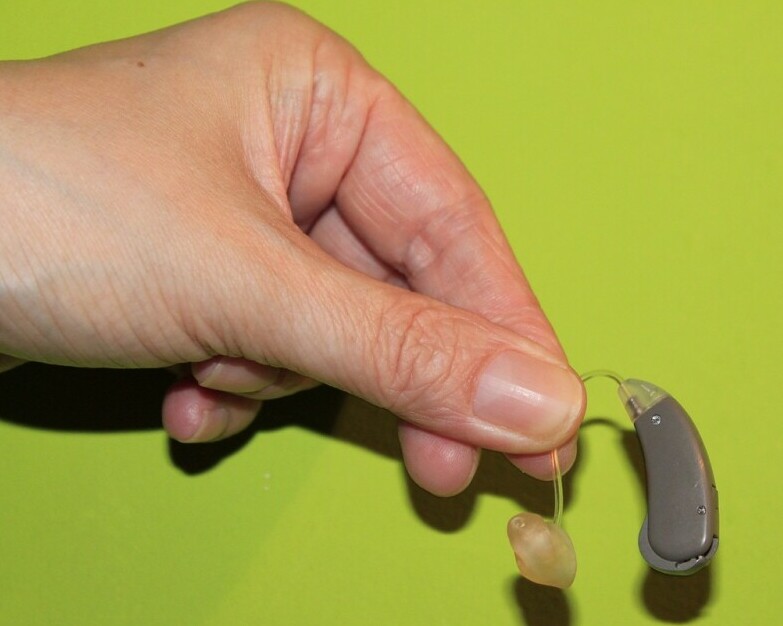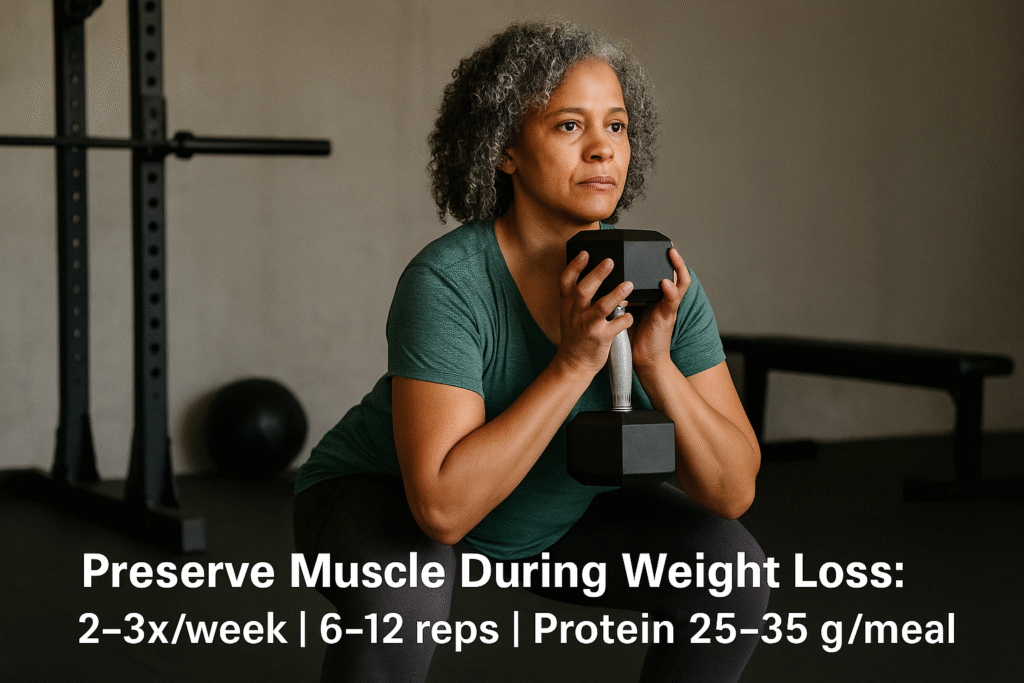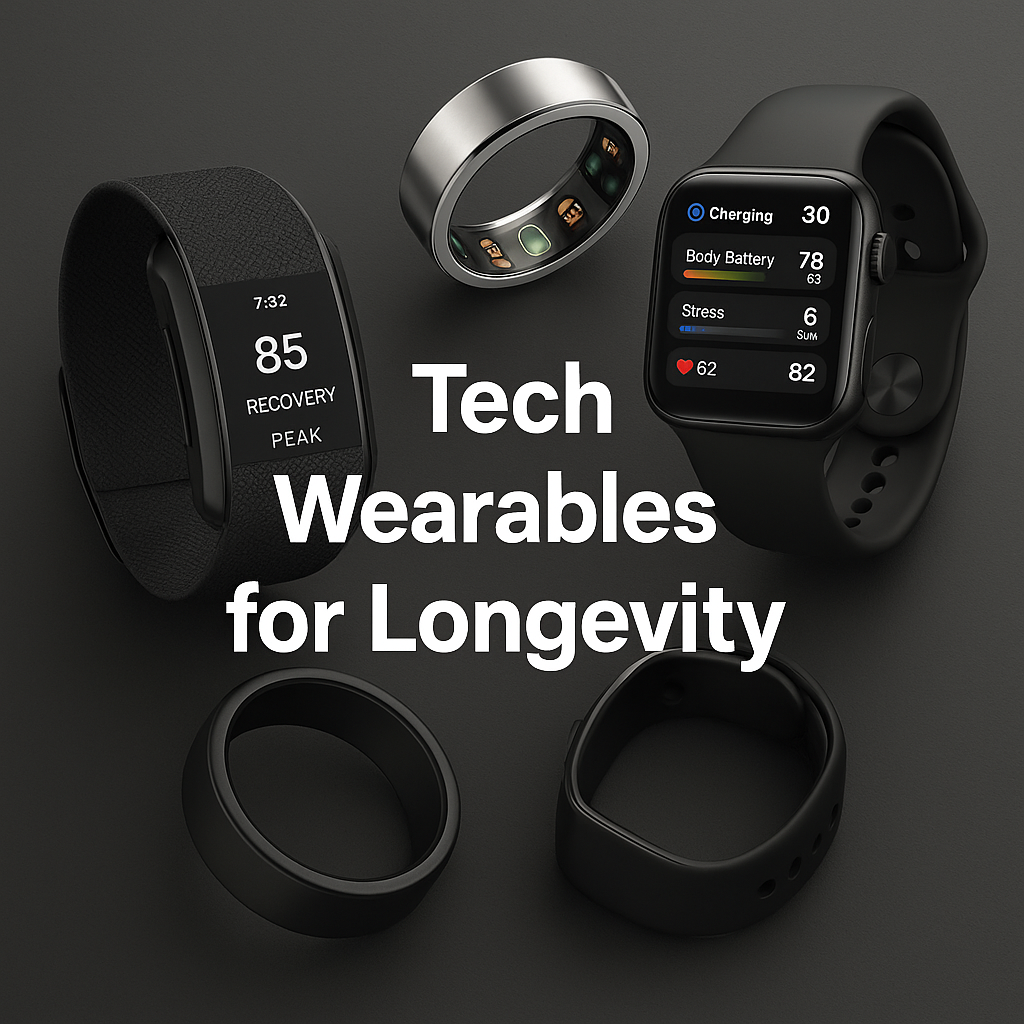Hitting 40 isn’t about slowing down—it’s about leveling up. Your metabolism shifts, hormones fluctuate, and muscle mass starts to decline unless you actively support it. The great news? What you eat can be one of your most powerful levers for energy, strength, long-term health, and more importantly longevity. The other thing to consider at this age and beyond is the nutritional gaps we may be experiencing due to the eating habits we have developed over the years and how adopting these 8 foods may take some time to acclimate in order to improve our long-term health.
Here are eight foods (or food groups) worth doubling down on once you cross the big 4-0. Each comes with science-backed reasons why it deserves a spot on your plate.
1. Fatty Fish (Salmon, Mackerel, Sardines, Trout)
As you enter your 40s, cardiovascular health takes center stage. One of the simplest and most delicious ways to protect your heart is by adding fatty fish to your weekly rotation. Salmon, sardines, and mackerel are packed with long-chain omega-3 fatty acids—EPA and DHA—that your body can’t make efficiently on its own. These nutrients help reduce triglycerides, lower blood pressure, and may even play a role in improving brain function. Research published in Circulation shows that regular consumption of fatty fish significantly reduces the risk of sudden cardiac death.
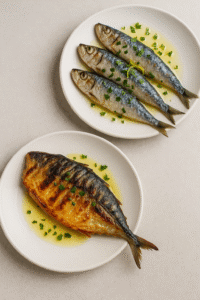 But the benefits go beyond heart health. DHA supports eye health (which naturally declines with age) and may help slow age-related macular degeneration. Plus, EPA and DHA have anti-inflammatory properties that can ease stiff joints and support post-exercise recovery.
But the benefits go beyond heart health. DHA supports eye health (which naturally declines with age) and may help slow age-related macular degeneration. Plus, EPA and DHA have anti-inflammatory properties that can ease stiff joints and support post-exercise recovery.
Action step: If you’re not a fish lover, start small—try canned salmon mixed with Greek yogurt and lemon for a quick salmon salad. Or roast salmon fillets with a miso glaze once a week. If you’re vegetarian, consider algae oil as a plant-based omega-3 alternative. Consistency, not perfection, is the key.
2. Cruciferous Vegetables (Broccoli, Kale, Brussels Sprouts, Cauliflower)
Cruciferous vegetables are nutritional powerhouses. They’re rich in vitamins A, C, and K, but their real magic lies in compounds called glucosinolates. When you chew or chop these vegetables, glucosinolates break down into biologically active compounds like sulforaphane, which support liver detoxification and have been studied for cancer prevention. 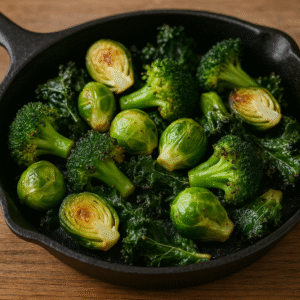
After 40, your body’s natural detox processes may not work as efficiently, so eating crucifers regularly can give you an edge. They also contain high amounts of fiber, which not only helps regulate blood sugar but also supports gut health by feeding beneficial bacteria.
The PREDIMED trial, a landmark Mediterranean diet study, highlighted the importance of plant-forward eating patterns for lowering cardiovascular risk, and cruciferous vegetables were central players in those benefits.
Action step: Steam broccoli lightly (overcooking destroys sulforaphane) and drizzle with extra virgin olive oil. Roast Brussels sprouts with balsamic vinegar to caramelize their natural sweetness. Aim for at least one cruciferous serving a day—it adds both flavor and protective nutrients your future self will thank you for.
3. Berries (Blueberries, Strawberries, Raspberries, Blackberries)
Think of berries as nature’s candy with benefits. Their vibrant colors come from anthocyanins, antioxidants that protect cells from oxidative stress—a process that accelerates aging and chronic disease. Studies in older adults show that blueberries, in particular, can improve memory and cognitive performance, possibly by increasing blood flow to the brain.
Berries are also excellent for cardiovascular health. A diet high in polyphenols, like those in berries, is linked to improved endothelial function (how well your blood vessels relax and contract). They’re naturally low in calories yet packed with fiber, making them ideal for weight management, which can be harder after 40.
Action step: Add a half-cup of mixed berries to your breakfast daily—whether on oatmeal, yogurt, or blended into a smoothie. For a sweet but healthy dessert, try frozen berries with a drizzle of dark chocolate. Don’t worry if fresh berries are out of season; frozen berries retain nearly all their nutritional value.
4. Fermented Foods (Yogurt, Kefir, Kimchi, Sauerkraut, Tempeh)
Gut health becomes more important with age, and fermented foods are your allies. These foods contain live probiotics—beneficial bacteria that improve gut microbiome diversity. A 2021 Stanford study found that just 10 weeks of eating fermented foods increased microbiome diversity and lowered inflammatory markers like interleukin-6, which are associated with aging and chronic disease.
Beyond digestion, probiotics may help regulate immune response, support mood, and even enhance metabolic health. Since inflammation tends to rise in midlife, this simple dietary change can have wide-reaching effects. 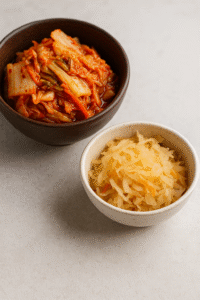
Action step: Choose yogurt labeled with “live and active cultures” to ensure probiotics are present. Incorporate kefir into your morning smoothie or enjoy kimchi and sauerkraut as flavorful sides with dinner. If you’re new to fermented foods, start with small servings and build up to avoid digestive discomfort.
Think of fermented foods as daily “insurance” for your gut and immune system.
5. Legumes (Lentils, Chickpeas, Black Beans, Edamame)
Legumes are humble yet mighty. They’re loaded with fiber, protein, iron, and magnesium—all nutrients that become more critical after 40. The soluble fiber in legumes helps lower LDL cholesterol and regulate blood sugar, which supports metabolic health. For women approaching menopause, legumes are also a good source of phytoestrogens, which may help balance hormones.
A 2012 meta-analysis in American Journal of Clinical Nutrition found that eating legumes significantly reduced total cholesterol, a risk factor for heart disease. They’re also highly satiating, meaning they help you feel full longer—a key tool for weight management.
Action step: Add lentils to soups, use chickpeas in roasted snack form, or make black bean tacos for meatless Mondays. For busy days, canned beans are perfectly fine—just rinse them to reduce sodium. If you’re new to legumes, start small to allow your digestive system to adapt.
6. Whole Grains (Oats, Quinoa, Farro, Barley)
Whole grains do more than keep you full—they’re a cornerstone of long-term metabolic health. Unlike refined grains, they retain their bran and germ, delivering fiber, B vitamins, and minerals like magnesium and iron. These nutrients support energy production and nerve health, which are vital as metabolism slows.
Research from Harvard (Circulation, 2016) showed that higher whole-grain intake is associated with lower risk of cardiovascular disease and total mortality. They also help balance blood sugar, preventing energy crashes and reducing the risk of type 2 diabetes.
Action step: Swap white rice for quinoa or barley in stir-fries and salads. Choose steel-cut oats instead of sugary cereals. Aim for three servings of whole grains per day to reap benefits. Remember, it’s about upgrading—not overhauling—your carb choices.
7. Nuts & Seeds (Walnuts, Almonds, Chia, Flax, Pumpkin Seeds)
Nuts and seeds are nutrient-dense snacks that deliver protein, healthy fats, and minerals in a compact form. Walnuts are particularly rich in plant-based omega-3s, while almonds provide vitamin E, an antioxidant that supports skin and immune health. Seeds like flax and chia add soluble fiber and lignans, which may support hormonal balance during midlife.
The PREDIMED trial proved the power of nuts: participants eating a Mediterranean diet supplemented with nuts reduced their risk of major cardiovascular events by nearly 30%.
Action step: Carry a small bag of mixed nuts for an afternoon snack to replace chips or candy. Add chia seeds to smoothies or overnight oats. Sprinkle pumpkin seeds on salads for crunch and added zinc, which supports immune health. Moderation is key—just a small handful is enough.
8. High-Quality Protein (Eggs, Lean Meats, Tofu, Dairy)
Muscle loss (sarcopenia) begins around age 40, making adequate protein intake crucial. Beyond muscle, protein also supports bone density, hormone production, and immune defense. Experts suggest aiming for 25–35g of protein at each meal to maximize muscle protein synthesis.
A 2017 position paper from the Journal of the International Society of Sports Nutrition recommends older adults consume 1.2–2.0 g of protein per kilogram of body weight daily. Spreading protein across meals is more effective than loading it all at dinner.
Action step: Start the day with Greek yogurt or eggs, not just toast. Add tofu or chicken breast to lunch salads. Consider pairing strength training with protein-rich snacks post-workout for best results. For vegetarians, soy products, lentils, and dairy can help you hit targets consistently.
Protein is the “longevity macronutrient” that keeps your body functional, resilient, and ready for adventure at any age.
Supplements That Support These Foods
Even with the best intentions, life gets busy, and you may not hit your nutrition targets where Supplements can help fill in the gaps.
We earn a commission if you make a purchase, at no additional cost to you.
01/07/2026 12:57 pm GMT
Rating: 4.6/5
Description: High-potency fish oil with 1,280 mg omega-3s per serving. Lemon flavor to reduce “fish burps.”
Benefits: Supports heart, brain, and joint health.
Appeal: Purity-tested, trusted brand, easy softgels.
We earn a commission if you make a purchase, at no additional cost to you.
01/07/2026 12:54 pm GMT
Rating: 4.8/5
Description: Vegan-friendly formula with lichen-sourced D3 and K2 (MK-7).
Benefits: Supports bone strength and proper calcium absorption.
Appeal: Clean, plant-based formula in small softgels.
NOW Foods Supplements, Magnesium Glycinate 100 mg, Highly Absorbable Form, 180 Tablets
$31.99
$15.99
We earn a commission if you make a purchase, at no additional cost to you.
01/07/2026 12:58 pm GMT
Rating: 4.7/5 average across major retailers
Description: Gentle, highly absorbable magnesium form for relaxation and metabolic support.
Benefits: Supports sleep, muscle recovery, blood sugar balance.
Appeal: Affordable, easy on digestion, reliable quality.
We earn a commission if you make a purchase, at no additional cost to you.
01/07/2026 12:58 pm GMT
Rating: ~4.6/5
Description: Hydrolyzed collagen peptides with vitamin C and hyaluronic acid.
Benefits: Supports skin elasticity and joint comfort.
Appeal: Neutral taste; dissolves in hot or cold drinks.
My Perspective
Here’s what I have found and learned after 40-Food isn’t just fuel anymore; it’s a strategy to bridge the gaps from certain components in our body that declines with age. This is different for everyone and the only way to find out the deficiencies in your aging body is to seek a medical professional to conduct different types of testing such as Complete Blood Count (CBC), Comprehensive Metabolic Panel (CMP), Lipid Panel, and Comprehensive Vitamin Panel for this determination. For me, keeping fish mainly ocean varieties, lentils, and kimchi as staples makes everything else easier to fill in my nutritional gaps. Supplements also help patch the gaps when I travel or do not have time to properly plan my meals. The goal isn’t perfection—it’s identifying the nutrition gaps and addressing those gaps so your future self is stronger, sharper, and more capable. That’s the real anti-aging strategy.
Disclaimer: All the content on this site is for informational purposes only, does not constitute medical advice, and does not establish any kind of patient-client relationship by your use of this website. I am not a health care professional. The information, including but not limited to text, graphics, images and other material contained on this website are for informational purposes only. No material on this site is intended to be a substitute for professional medical advice, diagnosis, or treatment. Before starting any new regimen, supplement, diet, or program, it is crucial to consult with a healthcare professional to ensure it is safe and suitable for your individual health needs and circumstances. Here’s a little transparency: This website also contains affiliate links. This means if you click and make a purchase, we may receive a small commission. Don’t worry, there’s no extra cost to you. It’s a simple way you can support our mission to bring you quality content.


